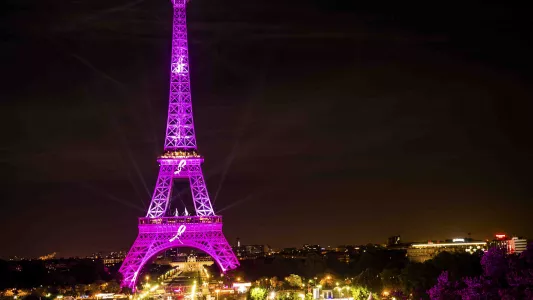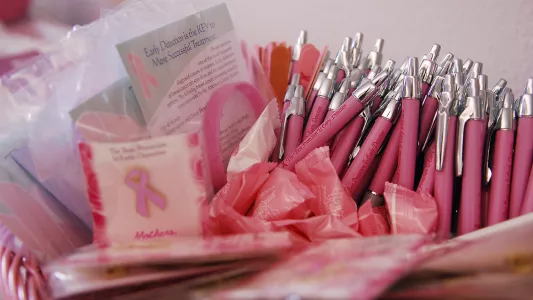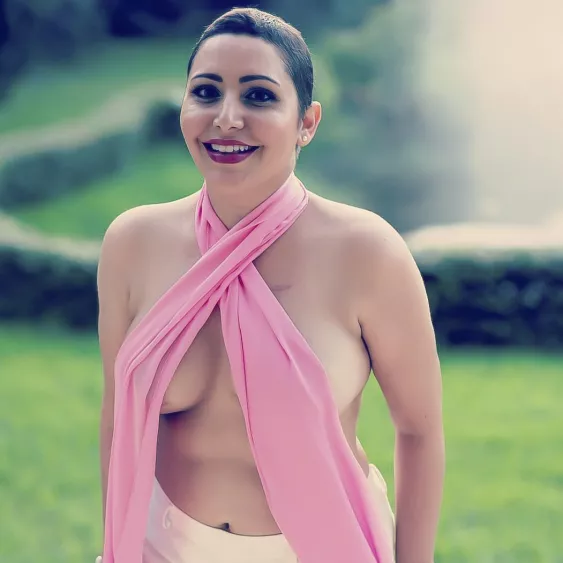How BCAM Started.
October is Breast Cancer Awareness month worldwide. The initial idea behind the movement was to raise awareness and funds for the disease in order to encourage research for prevention, diagnosis, cures and treatment. More recently, it creates opportunities to raise awareness about breast cancer to promote early detection, hear patient's stories, address breast cancer stigma and to raise funds.
NBCAM was founded in 1985 in October, as a partnership between the American Cancer Society and the pharmaceutical division of Imperial Chemical Industries. The aim of NBCAM from the start has been to promote mammography as the most effective weapon in the fight against breast cancer. The campaign aimed to educate people about the disease and to encourage women to go for their screenings to improve their chances of an early diagnosis.
According to the World Health Organization fact sheet, in 2020, there were 2.3 million women diagnosed with breast cancer and 685 000 deaths globally. Also as of the end of 2020, there were 7.8 million women alive, who had been diagnosed with breast cancer in the past 5 years, making it the world's most prevalent cancer. Breast cancer occurs in every country of the world in women at any age after puberty, but with increasing rates in later life.
Breast cancer mortality changed little from the 1930s through to the 1970s. Improvements in survival began in the 1980s, in countries that had early detection programs combined with different modes of treatment.

Ribbons, Peach Or Pink.
One of the individuals who was inspired by the first campaign in the United States, was Evelyn H. Lauder; the founder of the make-up brand, Estee Lauder. In 1993, she founded the Breast Cancer Research Foundation and contributed to establishing the pink ribbon as its symbol, although this was not the first time that the ribbon had been used to symbolize breast cancer.
In fact a 68-year-old California woman named Charlotte Haley started the pink ribbon movement in her own dining room. Her sister, daughter, and granddaughter all had breast cancer and in 1991, she began hand-making the peach coloured breast cancer ribbons. She added them to a postcard that read:
The National Cancer Institute's annual budget is $1.8 billion, only 5% goes for cancer prevention. Help us wake up legislators and America by wearing this ribbon.
Charlotte handed out cards at her local supermarket and wrote to prominent women, everyone from former First Ladies to the Dear Abby columnist. Her message spread by word of mouth and she distributed thousands of these cards. At the time, a breast cancer diagnosis inspired both fear and little hope with limited treatment options. In the 1990s, not so long ago, scientific understanding of the nature of the disease was limited and research into possible prevention strategies was only beginning.
The peach colored ribbon caught the attention of Alexandra Penney, editor in chief of Self magazine, who was working on Self magazine's 1992 National Breast Cancer Awareness Month issue. She wanted to adapt Charlotte's idea by working with her, but Charlotte rejected the offer saying that Self's initiative was too commercial.
Unable to use Haley's peach ribbon for legal reasons, Self magazine and others interested in promoting breast cancer awareness with a ribbon as the symbol, decided to simply change the color to the pink that we know and recognize today.
Who is at risk?
Unfortunately, the strongest breast cancer risk factor is simply that of being a women. Although, approximately 0.5-1% of breast cancers occur in men and the treatment in men follows the same principles of management as for women.
Breast cancer is not a transmissible or infectious disease, there are no known viral or bacterial infections linked to the development of breast cancer. Approximately half of breast cancers develop in women who have no identifiable breast cancer risk factor other than gender and age over 40 years. Although a family history of breast cancer increases the risk, the majority of women diagnosed with breast cancer do not have a known family history of the disease.
Certain inherited "high penetrance" gene mutations greatly increase breast cancer risk, the most dominant being mutations in the genes BRCA1, BRCA2 and PALB-2. Women found to have mutations in these major genes could consider risk reduction strategies, such as surgical removal of both breasts. Consideration of such a highly invasive approach only concerns a very limited number of women, and should be carefully evaluated considering all alternatives.

Pinkwashing.
Although the campaign initially started more than 30 years ago, it's more prominent than ever today; with iconic buildings being illuminated in pink throughout October, in support of the cause. During the month many people take part in a wide variety of events such as charity walks and runs to raise money. The vibrant colour pink is used in support of breast cancer awareness in a variety of mediums; flyers, clothing and websites and this has created new controversy.
Pinkwashing is a form of cause marketing that uses a range of pink ribbon logos, displayed on various products.
The term 'pinkwashing' is associated with companies that use the pink ribbon symbol or use the support of breast cancer charities as a marketing technique, to promote one of their products, while at the same time manufactured products, which have proven to contain ingredients that are associated with the increased risk of developing the disease. The term pinkwashing was first coined by Breast Cancer Action (BCA). On thinkbeforeyoupink.org, a BCA project, a 'pinkwasher' is defined as:
A company or organization that claims to care about breast cancer by promoting a pink ribbon product, but at the same time produces, manufactures and/or sells products that are linked to the disease.
In 2007, the Estée Lauder Pink Ribbon Collection series used a donation to The Breast Cancer Research Foundation (BCRF) to promote products containing parabens, chemicals linked to breast cancer.
In 2008, Think Before You Pink launched an online campaign against Yoplait, the national sponsor of Susan G. Komen's annual walk, a prestigious event in the United States. Their pink-lidded yogurt was sold to raise money for breast cancer, but it was made from dairy products containing the hormone rBGH or rBST, a synthetic (man-made) hormone that is marketed to dairy farmers to increase milk production in cows.
The hormone has been used in the United States since it was approved by the Food and Drug Administration (FDA) in 1993, but its use is not permitted in the European Union, Canada, and some other countries, because milk from rBGH-treated cows has higher levels of IGF-1 and several studies have found that IGF-1 levels at the high end of the normal range may influence the development of certain tumors (source: www.cancer.org).
In 2010, Susan G Komen partnered with Kentucky Fried Chicken briefly on a "Buckets for a Cure" campaign. In response, Breast Cancer Action launched the "What's the Cluck?" campaign, arguing that, although Komen's intentions may have been to promote KFC's new grilled chicken and vegetable meals, the same pink buckets held fried chicken, which can be attributed to high-fat diets linked to cancer risk and diseases. According to Komen, KFC's pink buckets of chicken helped raise $4 million for free mammogram screening.
In 2012, the Food and Drug Administration connected the 5-Hour Energy drinks, manufactured by Living Essentials LLC, to thirteen deaths and serious injuries, including heart attacks. The caffeinated energy shot had been promoted using a Living Beyond Breast Cancer (LBBC) sponsorship.

Who and What To Support?
The breast cancer advocacy organization, Breast Cancer Action, has said repeatedly in newsletters and other information sources that October has become a public relations campaign, which avoids discussion of the causes and prevention of breast cancer and instead focuses on "awareness", as a way to encourage women to get their mammograms.
Some companies spend more on marketing campaigns for "pink products" and tie-ins, than they donate to the cause. According to The New York Times in October 2015, fine print disclaimers on pink products sold by Dick's Sporting Goods reveal that in some instances, no money at all is donated to breast cancer research. Other companies cap the amount they give to research during each October's "pink" campaign, but do not tell consumers when that cap has been reached.
If you want to help address and end the breast cancer epidemic, but don't want to contribute to the endemic pinkwashing of Breast Cancer Awareness Month, you can join Breast Cancer Action in challenging pink ribbon culture by starting your own "Don't Pink For Me" fundraising page.




